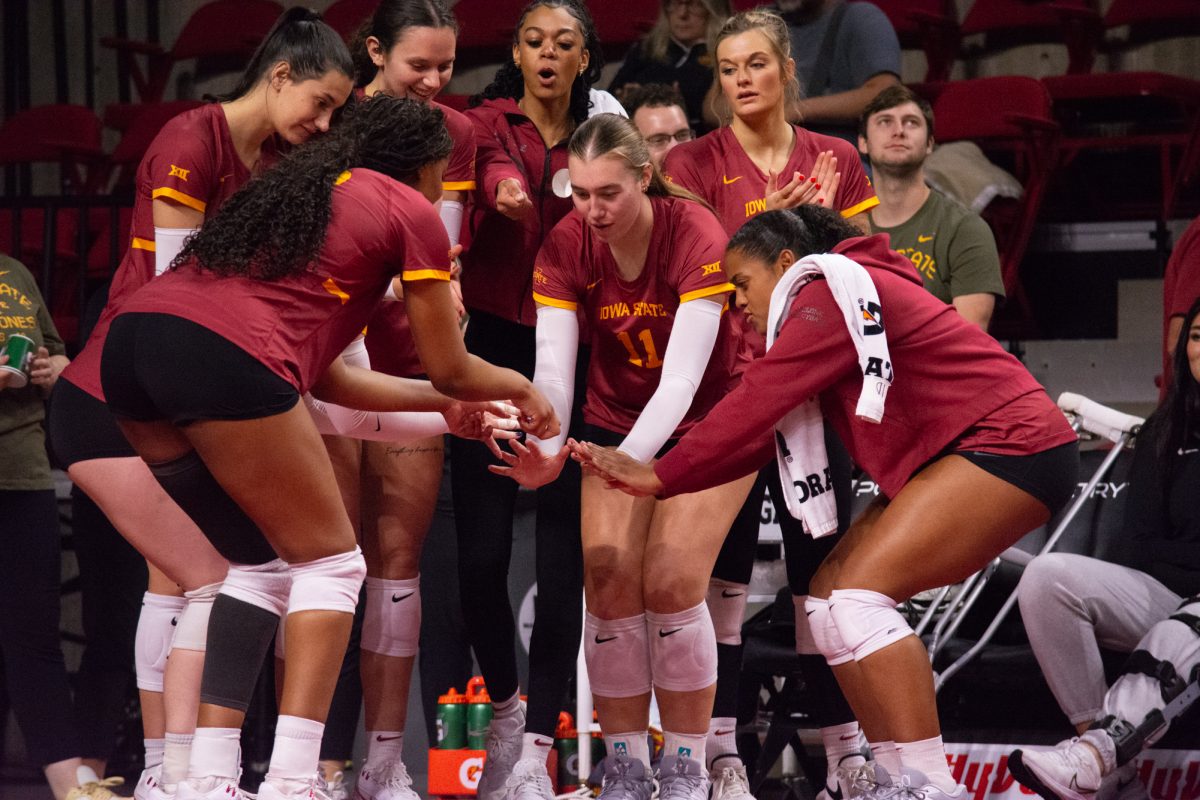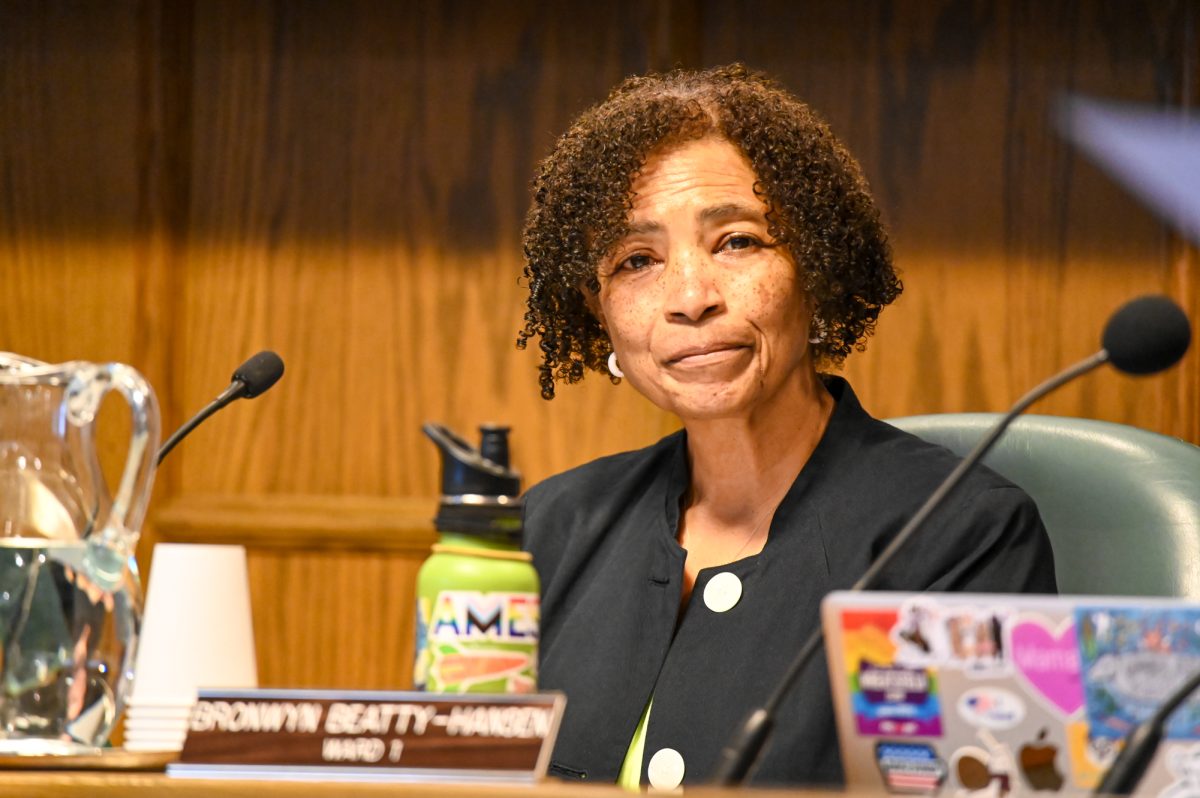Hindu temple brought to virtual life at center
December 6, 2002
ISU students who can’t go to India to observe a Hindu ceremony in a temple still might be able to see one, courtesy of the C6 Virtual Reality System.
Over lunch one day, Carolina Cruz-Neira, associate director of the Virtual Reality Applications Center and associate professor of industrial and manufacturing systems, and Whitney Sanford, associate professor of religious studies, came up with the idea of a virtual Hindu temple.
The first stage of the temple has been completed and visitors to the virtual temple can now observe a shortened version of a ritual actually performed at Hindu temples, Sanford said.
The current version of the temple took a year and a half to create and currently shows the shortened ritual as well as several human figures, or avatars, Cruz-Neira said.
Like any other research done at C6, the project has been “challenging and complex,” which is exactly what C6 is nationally and internationally known for, she said.
“[We are] trying to bring virtual reality into the humanities,” she said.
Sanford said she hopes the temple is the first in a series of immersive experiences involving other cultures or religions. She said she wants to use this technology to take students where they can’t go and teach students in different ways, other than standing in front of a classroom lecturing.
“It’s a new and interesting way to teach students,” Sanford said. “[The student] gets to interact. It’s more fun than standing in front of a classroom.”
The virtual temple could radically transform teaching as instructors are already “moving away from lecturing towards interactivity,” Sanford said.
They have already taken the virtual temple to the supercomputer conference in Baltimore, Md., where there was a great response, she said.
Currently, Cruz-Neira and Sanford are applying for National Science Foundation funding to take the temple to the next step, Sanford said.
Alan Fischer, graduate student in computer engineering, helped build the temple.
“[We are] aiming to make it more versatile,” he said.
Fischer said they intend to make the current three-minute service longer as well.
The next step is to make the avatars in the temple more interactive, he said.
Cruz-Neira said that currently, students would not be active participants and avatars are not aware of the student, sometimes walking through them.
“We want to provide the characters with intelligence,” she said.
They will also work on adding multimedia that allows the participant to step outside of the temple to get information on aspects of the service.
“[Students can currently] see the full ritual from beginning to end as an observer, but there is not much participation,” Cruz-Neira said.
She said the intention of the temple is to provide education in the same way a museum educates visitors.
Swetha Fadananda, a Hindu graduate student in architecture, thinks the virtual temple could help visitors relax.
Fadananda doesn’t think that the virtual temple would compromise the religion, but noted that “it’s not going to be the same as being in a temple.”
Sanford said she believes Iowa State has the potential to be leaders by bringing virtual reality, like C6, and the humanities together.
“We can do something that I’m not sure how many universities can do,” she said.
“[With this technology] we can do some amazing things,” Sanford said.
Sanford said she hopes this temple will not replace actually visiting India.
The temple “is never going to fully replace going [to India],” she said. “I want to excite people to go there.”






